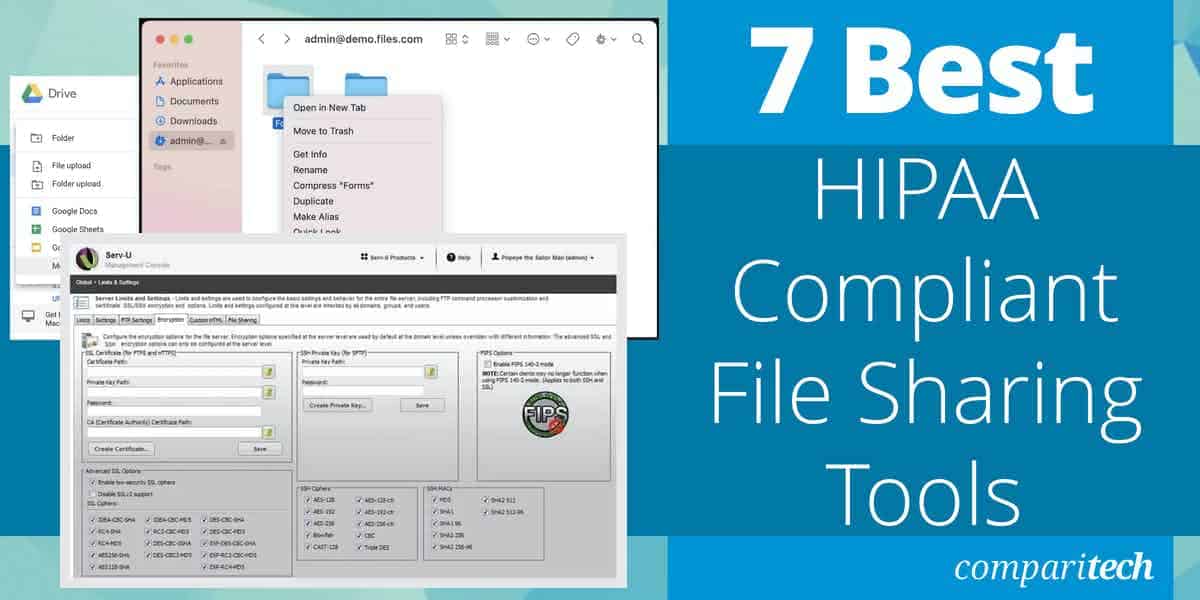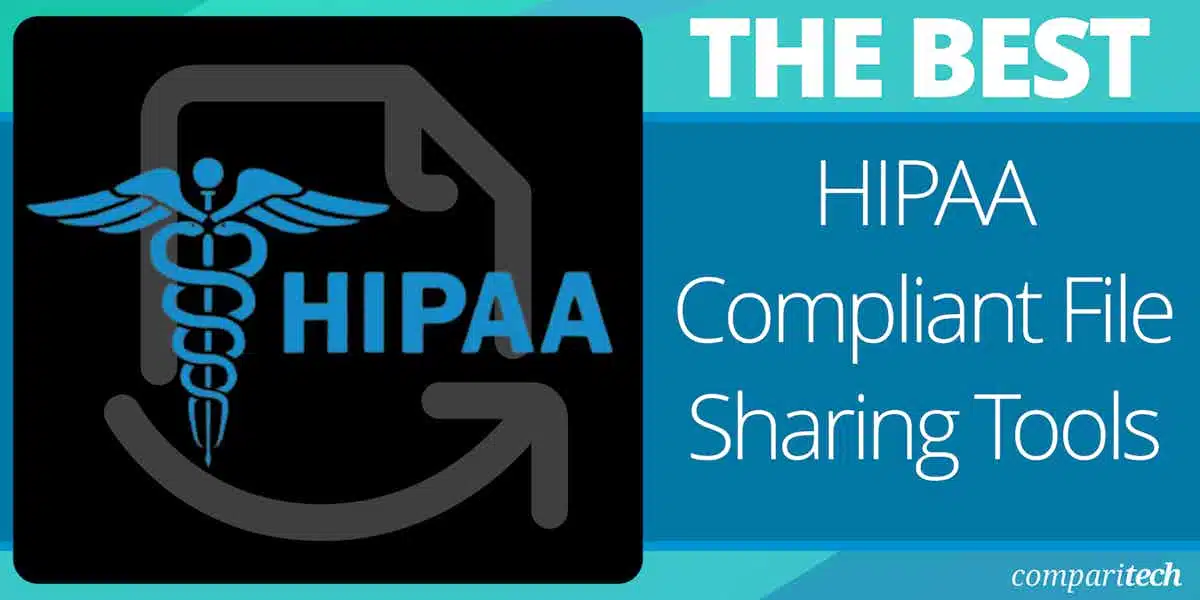Crafting Secure Connections: A Guide to HIPAA-Compliant File Sharing Software
As HIPAA-compliant file sharing software takes center stage, this guide invites readers into a world of secure data exchange in healthcare, highlighting the critical need for compliance and the potential risks of non-compliance. From essential features to best practices, this overview delves into the intricacies of ensuring data security and privacy in the digital age.
In the following sections, we will explore key aspects of HIPAA-compliant file sharing software, shedding light on implementation strategies, training requirements, and software comparisons to empower healthcare professionals and organizations in safeguarding sensitive information.
Introduction to HIPAA-Compliant File Sharing Software
HIPAA, the Health Insurance Portability and Accountability Act, is a regulatory standard in the healthcare industry that aims to protect patient privacy and secure the handling of protected health information (PHI).
In healthcare, the importance of HIPAA compliance cannot be overstated. It safeguards sensitive patient data, ensures confidentiality, and maintains trust between healthcare providers and patients.
The Need for HIPAA-Compliant File Sharing Software
Given the sensitive nature of patient information, healthcare organizations must use secure methods to share files internally and externally. HIPAA-compliant file sharing software provides a solution that meets the regulatory requirements for protecting PHI.
- Encryption: HIPAA-compliant file sharing software uses encryption to secure data both at rest and in transit, reducing the risk of unauthorized access.
- Access Controls: These software solutions allow organizations to set access controls, limiting who can view, edit, or share sensitive files.
- Audit Trails: Compliance with HIPAA regulations requires maintaining audit trails of file access and sharing activities, which can be easily managed with the software.
Potential Risks of Non-Compliance with HIPAA Regulations
Failure to comply with HIPAA regulations can result in severe consequences for healthcare organizations, including hefty fines, legal penalties, reputational damage, and loss of patient trust.
- Data Breaches: Non-compliance increases the risk of data breaches, exposing patient information to malicious actors and compromising privacy.
- Lack of Accountability: Without HIPAA compliance, organizations may struggle to demonstrate their commitment to protecting patient data, leading to mistrust among stakeholders.
- Legal Consequences: Violating HIPAA regulations can lead to legal action, lawsuits, and regulatory sanctions, which can have long-lasting financial and operational implications.
Features of HIPAA-Compliant File Sharing Software

When it comes to HIPAA-compliant file sharing software, there are several essential features that help ensure the security and privacy of sensitive healthcare information. Let's take a look at some of these key features.
Encryption
Encryption is a crucial aspect of HIPAA compliance in file sharing software. By using strong encryption algorithms, such as AES 256-bit encryption, sensitive data is converted into a secure code that can only be accessed with the right decryption key.
This helps protect patient information from unauthorized access and ensures that data remains confidential during transit and storage.
Access Controls
HIPAA-compliant file sharing software includes robust access controls that allow organizations to manage user permissions and restrict access to sensitive data based on roles and responsibilities. These access controls help prevent unauthorized users from viewing or modifying patient information, reducing the risk of data breaches and ensuring compliance with HIPAA regulations.
Audit Trails
Audit trails play a vital role in HIPAA compliance by providing a detailed record of all user activities within the file sharing software. This includes information such as who accessed which files, when the access occurred, and any changes made to the data.
By maintaining comprehensive audit trails, organizations can track and monitor data access, detect any suspicious activities, and demonstrate compliance with HIPAA regulations during audits or investigations.
Best Practices for Implementing HIPAA-Compliant File Sharing Software
Implementing HIPAA-compliant file sharing software is crucial for protecting sensitive patient information. Here are some best practices to guide you through the process:
Step-by-Step Guide for Implementation
- Conduct a thorough risk assessment to identify potential vulnerabilities in your current file sharing system.
- Select a HIPAA-compliant file sharing software that meets all the necessary security and privacy requirements.
- Ensure all staff members are trained on how to properly use the software and understand HIPAA regulations.
- Implement encryption protocols to secure data both at rest and in transit.
- Establish access controls to limit who can view, edit, and share sensitive files.
- Regularly update the software to patch any security vulnerabilities and stay compliant with HIPAA regulations.
Training Requirements for Staff
- Provide comprehensive training sessions for all staff members who will be using the file sharing software.
- Ensure that training includes proper handling of sensitive information, HIPAA compliance guidelines, and best practices for data security.
- Regularly update training materials to reflect any changes in HIPAA regulations or software updates.
- Require all staff members to undergo refresher courses periodically to reinforce their knowledge and skills.
Regular Security Assessments and Audits
- Conduct regular security assessments to identify any vulnerabilities or weaknesses in the file sharing software.
- Schedule routine audits to ensure that all security measures are being properly implemented and followed by staff members.
- Document all security assessments and audits to track progress and compliance with HIPAA regulations.
- Address any findings or issues promptly to maintain the integrity and security of patient information.
Comparison of Popular HIPAA-Compliant File Sharing Software

When it comes to HIPAA-compliant file sharing software, there are several options available in the market. Each software has its own set of features, advantages, and disadvantages. Let's compare and contrast some popular HIPAA-compliant file sharing software options based on their HIPAA compliance, pricing, scalability, and customer reviews.
Option 1: Software A
Software A is known for its robust security features and strict adherence to HIPAA regulations. It offers end-to-end encryption and access controls to ensure secure file sharing. However, some users have reported that the interface can be a bit complex, leading to a learning curve for new users.
In terms of pricing, Software A offers tiered plans based on the number of users and storage capacity. Customer reviews generally praise its security measures but mention occasional technical glitches that can affect user experience.
Option 2: Software B
Software B is another popular choice for HIPAA-compliant file sharing. It boasts a user-friendly interface and seamless integration with other healthcare systems. While it may not have the same level of encryption as Software A, it still meets HIPAA standards for data protection.
Pricing for Software B is straightforward, with a monthly subscription model based on the organization's size. Customer reviews highlight the ease of use and reliability of Software B, although some mention limitations in customization options.
Option 3: Software C
Software C stands out for its scalability and flexibility, making it suitable for both small practices and large healthcare organizations. It offers advanced audit trails and reporting features to track file access and ensure compliance. While Software C is slightly pricier compared to other options, the additional features and customization options justify the cost for many users.
Customer reviews often mention the excellent customer support provided by Software C, although some users have reported occasional delays in updates and new feature releases.In conclusion, when choosing a HIPAA-compliant file sharing software, organizations should consider their specific needs, budget, and level of technical expertise.
Each software option has its strengths and weaknesses, so it's essential to weigh the pros and cons carefully before making a decision.
Last Word

In conclusion, navigating the landscape of HIPAA-compliant file sharing software requires a blend of vigilance, technology, and adherence to best practices. By prioritizing data security and compliance, healthcare entities can foster trust, efficiency, and transparency in their operations, ultimately benefiting both patients and providers.